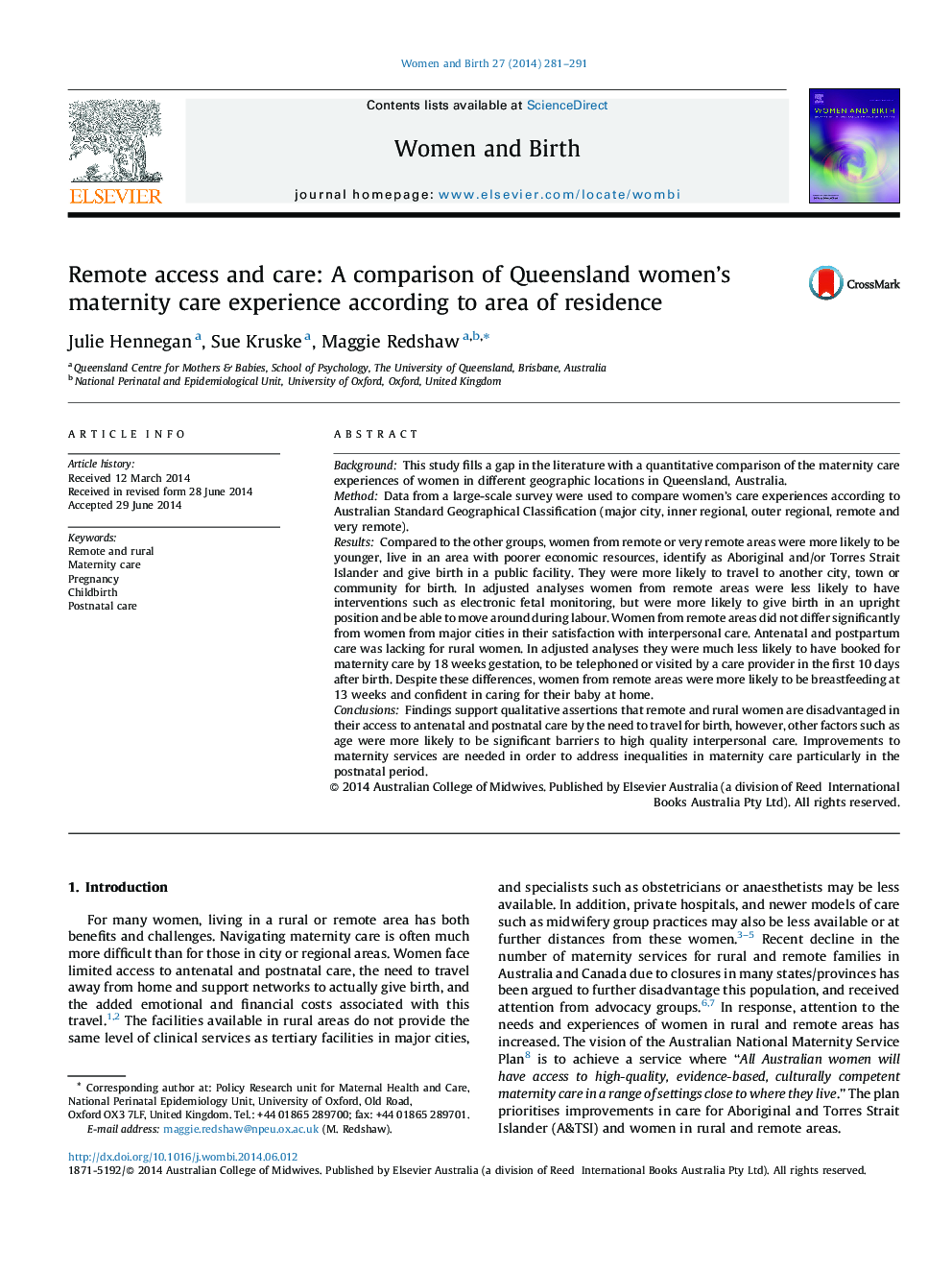| Article ID | Journal | Published Year | Pages | File Type |
|---|---|---|---|---|
| 2636001 | Women and Birth | 2014 | 11 Pages |
BackgroundThis study fills a gap in the literature with a quantitative comparison of the maternity care experiences of women in different geographic locations in Queensland, Australia.MethodData from a large-scale survey were used to compare women's care experiences according to Australian Standard Geographical Classification (major city, inner regional, outer regional, remote and very remote).ResultsCompared to the other groups, women from remote or very remote areas were more likely to be younger, live in an area with poorer economic resources, identify as Aboriginal and/or Torres Strait Islander and give birth in a public facility. They were more likely to travel to another city, town or community for birth. In adjusted analyses women from remote areas were less likely to have interventions such as electronic fetal monitoring, but were more likely to give birth in an upright position and be able to move around during labour. Women from remote areas did not differ significantly from women from major cities in their satisfaction with interpersonal care. Antenatal and postpartum care was lacking for rural women. In adjusted analyses they were much less likely to have booked for maternity care by 18 weeks gestation, to be telephoned or visited by a care provider in the first 10 days after birth. Despite these differences, women from remote areas were more likely to be breastfeeding at 13 weeks and confident in caring for their baby at home.ConclusionsFindings support qualitative assertions that remote and rural women are disadvantaged in their access to antenatal and postnatal care by the need to travel for birth, however, other factors such as age were more likely to be significant barriers to high quality interpersonal care. Improvements to maternity services are needed in order to address inequalities in maternity care particularly in the postnatal period.
